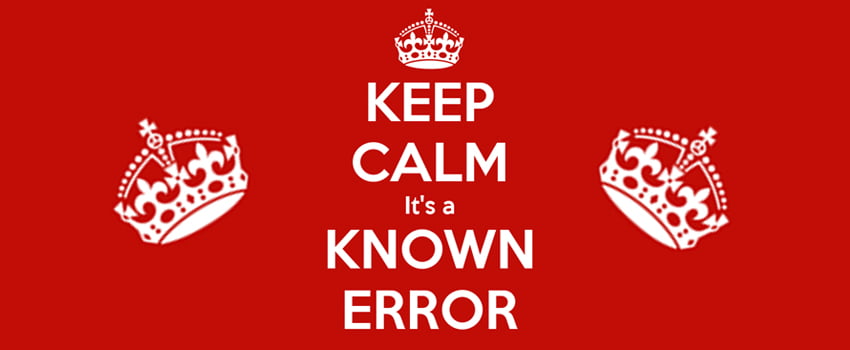
Why, and How, to Blend VeriSM Into Your ITSM BAU
So, here’s the thing. We all know that we’re supposed to be leaning into digitalization but, for many people, the real question is: How do we get started? Add in the fact that service management is no longer just for IT – it’s for the whole organization thanks to enterprise service management – and we’ve the potential for confusion, inaction, or missteps among other adverse outcomes.
For your IT service management (ITSM), and wider service management, capabilities to remain relevant in a digital world, the ITIL ITSM best practice framework will give you the basics, but layering in VeriSM – billed as “service management for the digital age” – will help to take your ITSM game to the next level.
This blog looks at the basics of this still relatively new approach and how to start blending VeriSM into your existing ‘business-as-usual’ ITSM capabilities.
VeriSM – The Basics
Let’s get this from the horse’s mouth. The VeriSM.global website explains it as follows:
“VeriSM is a service management approach for the digital age that helps service providers to create a flexible operating model to meet desired business outcomes. It supports organizations to succeed in the world of digital services, using all organizational capabilities, from IT to Marketing and Finance to Customer Service, in order to deliver value.”
In other words, VeriSM describes a service management approach that’s tailored to the organization level rather than just IT. Importantly, it focuses on the end-to-end view of the organization instead of a single department (which has traditionally been IT in terms of ITSM).
Rather than looking at one prescriptive way of working, VeriSM helps organizations to respond to their consumers to deliver value through integrated service management practices. Done well, it can enable organizations to adopt service management practices in a flexible way to deliver the right outcomes across the enterprise.
Have I got your attention yet?
VeriSM – The Key Concepts
At its most basic level, VeriSM has a management mesh that represents the various strands that make up a product or service including environmental factors, resources, emerging technologies, and management practices.
No two companies are the same, so the management mesh will look different in each individual organization. New technologies and best practice frameworks will continue to emerge and evolve over time, so the management mesh provides the flexibility to respond to these new developments since the mesh can be adapted and flexed as new requirements emerge.
When it’s applied during the creation, or adaptation, of an existing product or service, the mesh can also be used to compare the current situation with the future desired state as part of a broader program of change.
The VeriSM operating model has four stages:
- Define – Starting from agreed stakeholder requirements, the organization designs the service or product in line with customer needs. The result of this stage is a service blueprint.
- Produce – This is the stage of building, testing, and implementing the service or the product based on the service blueprint and ensuring that it meets the needs of the customer.
- Provide – The new or changed product/service is available for use. This is the part of the model that manages the activities needed to keep the solution and outcomes fit for purpose by protecting, maintaining, and improving as appropriate.
- Respond – Supporting the customer during any incidents, questions, or service requests. This stage collects, manages, and responds to customer feedback.
Importantly, VeriSM reflects service management in the context of modern business and IT landscapes that not only includes digital transformation but also the impact and needs of other service-delivery factors such as customer experience (CX), DevOps, artificial intelligence (AI), the Internet of Things (IoT), and cloud management.
Getting Started with VeriSM
VeriSM is all about flexibility, effective relationships, and the ability to blend different approaches together, so starting with the people side of things is key.
The starting point for any VeriSM-adopting organization is the creation of a focused team to act as a single point of both accountability and contact. This team will start the discovery phase (understanding both VeriSM and the organizational opportunities), identify potential quick wins, and progress sponsorship from senior management.
Then there’s a need to align VeriSM with the existing operating model, making changes to it as needed. By understanding the key elements that make up your products and services, you’ll be able to have a baseline of your current capabilities and then to adapt to the needs of your customers. This baseline will include:
- Environmental factors – such as compliance/regulatory requirements, culture, and competition.
- Management practices – including industry best practice frameworks, standards, and approaches; for example, ITIL, COBIT, IT4IT, ISO 20000, Agile , and Lean.
- Resources – this is people, money, buildings, inventory, time, knowledge, and skills.
- Emerging technologies – such as the raft of AI capabilities including intelligent automation, AI-assisted analytics, and virtual assistants.
Once you’ve established this baseline, you’ll have a better understanding of the organizational governance, management principles, and objectives which will form the boundaries of your management mesh. This will enable the VeriSM team to develop the right strategies to meet the organization’s requirements. The mesh can then be used to organize and activate each component in the operating model and develop tactical and operational plans to produce the expected outcomes of the customer.
Having the management mesh in place means that you can start to put your plans into action. These plans, thanks to the rise of digital transformation, will likely cover more than just IT –extending the benefits of ITSM to the rest of the organization. For example:
- Human resources (HR), including the cross-functional needs of employee onboarding
- Finance and procurement
- Legal
- Project management
- Information security
- Training
- Facilities
Plus, there’s the need to “improve, improve, improve!” Keep moving forward – and having a flexible model enables your organization to constantly adapt and improve in line with changing business needs. Some improvement examples to consider, in the context of VeriSM, include:
- Change management process becoming too cumbersome? Then investigate best practices such as Agile, Lean, or Kanban to make it more flexible and introduce delegated approvals to improve flow.
- Need to be able to demonstrate compliance in ITSM? Then look at ISO 20000 to be able to be certified to an agreed standard.
- Looking to up your ITSM maturity? Then use COBIT’s maturity model mapped to each ITSM process with suggested steps on how to get to the next level.
These examples demonstrate a key benefit of VeriSM – the ability to pick-and-choose aspects of other IT management and service management approaches as needed. There are of course others, which I’ll briefly cover next.
Key VeriSM Benefits
I’ve talked about VeriSM basics and how to get started, but as you’re likely going to need to justify any changes to the ITSM status quo, here are some of the benefits of VeriSM adoption:
- Flexibility – VeriSM is an approach that complements, and allows you to blend together aspects of, other ITSM frameworks; plus, it’s not limiting or prescriptive.
- Taking a holistic view – by unifying different IT and service management frameworks and standards, VeriSM allows your organization to leverage its existing practices while integrating them with new, ideally best practice, ones from the most appropriate sources.
- It’s practical, not theoretical – VeriSM’s aim to offer a real-life approach is deliberately underpinned with real-world examples and case studies.
- It’s value-focused – enabling organizations to evaluate the potential of emerging technologies continually and find new ways of integrating innovation into daily operations.
- It elevates ITSM for enterprise-wide use – bridging the gap between technology-focused service-management frameworks and the need for a business-focused approach to digital transformation.
So, that’s my whistle-stop tour of the why and how of VeriSM. Have you already started to use it? If so, what have you achieved? Please let me know in the comments!






